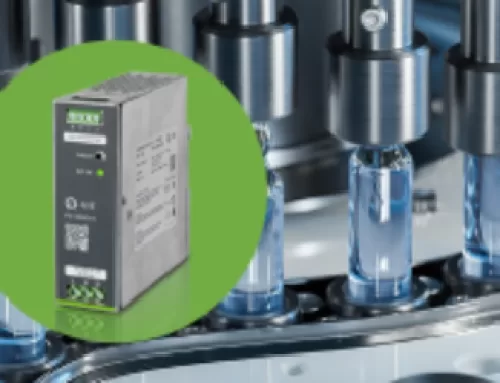
How does HMI support increasing productivity and quality?
In the world of electronics, Switch Mode Power Supplies (SMPS) are widely used because they are efficient and compact. However, they have a downside: they can cause poor power factor, which makes electrical systems less efficient and more expensive to operate. To fix this, various power factor correction (PFC) techniques are used to improve how effectively power is used in SMPS.
Here are key techniques for power factor correction in SMPS:
- Passive PFCPassive PFC involves the use of passive components like inductors and capacitors to improve the power factor. This method is simple and cost-effective but is generally less efficient and bulkier compared to active PFC methods. It is suitable for lower-power applications where cost and simplicity are critical factors.
- Active PFC Active PFC employs electronic circuits to control the input current, making it follow the shape of the input voltage more closely. This technique can achieve a power factor close to 1, making it highly efficient. Active PFC is more complex and costly but provides significant benefits in terms of efficiency and compliance with international standards for power quality.
- Single-Stage PFC In single-stage PFC, the power factor correction and the DC-DC conversion processes are combined into a single stage. This integration reduces the component count and simplifies the circuit design, making it a cost-effective solution for medium power applications.
- Two-Stage PFC Two-stage PFC separates the PFC and DC-DC conversion stages. The first stage performs power factor correction, while the second stage handles the DC-DC conversion. This approach provides better performance and efficiency, especially in high power applications, but at the expense of increased complexity and cost.
Benefits of Power Factor Correction in SMPS
- Improved Efficiency By correcting the power factor, SMPS can operate more efficiently, reducing energy losses and lowering electricity costs. This is particularly important in industrial settings where large numbers of SMPS are used.
- Compliance with Standards Many regions have stringent regulations on power quality. Implementing PFC ensures compliance with these standards, avoiding penalties and ensuring smoother operation of electrical systems.
- Reduced Harmonics PFC techniques help in reducing the harmonic distortion in the power supply, which can otherwise lead to overheating and potential damage to electrical components.
- Enhanced Reliability With improved power quality, SMPS are less likely to suffer from failures related to poor power conditions, thus enhancing the overall reliability and lifespan of the equipment.
GIC India’s Role in Power Factor Correction
- Task Automation:GIC India plays a pivotal role in enhancing the efficiency and reliability of SMPS through advanced power factor correction solutions. GIC’s power supplies are designed to incorporate both passive and active PFC techniques, ensuring compliance with international power quality standards and improving overall system efficiency.
GIC’s SMPS Features:
- Excellent Load & Line Regulation: GIC’s power supplies offer stable performance even under varying load conditions.
- High Efficiency: With power factor correction, GIC’s SMPS units achieve high efficiency, reducing energy consumption and operational costs.
- Robust Protection: Built-in protections against overload, short circuits, and over-temperature conditions ensure reliable operation.
- Compact Design: GIC’s SMPS solutions are designed to be space-saving while providing peak performance, suitable for a wide range of industrial applications
Conclusion
Implementing power factor correction in SMPS is crucial for improving efficiency and ensuring compliance with power quality standards. Whether through passive, active, single-stage, or two-stage PFC techniques, the benefits of a higher power factor translate to cost savings, enhanced reliability, and reduced environmental impact. As industries continue to demand more efficient and reliable power supplies, the role of effective PFC in SMPS becomes increasingly significant.




